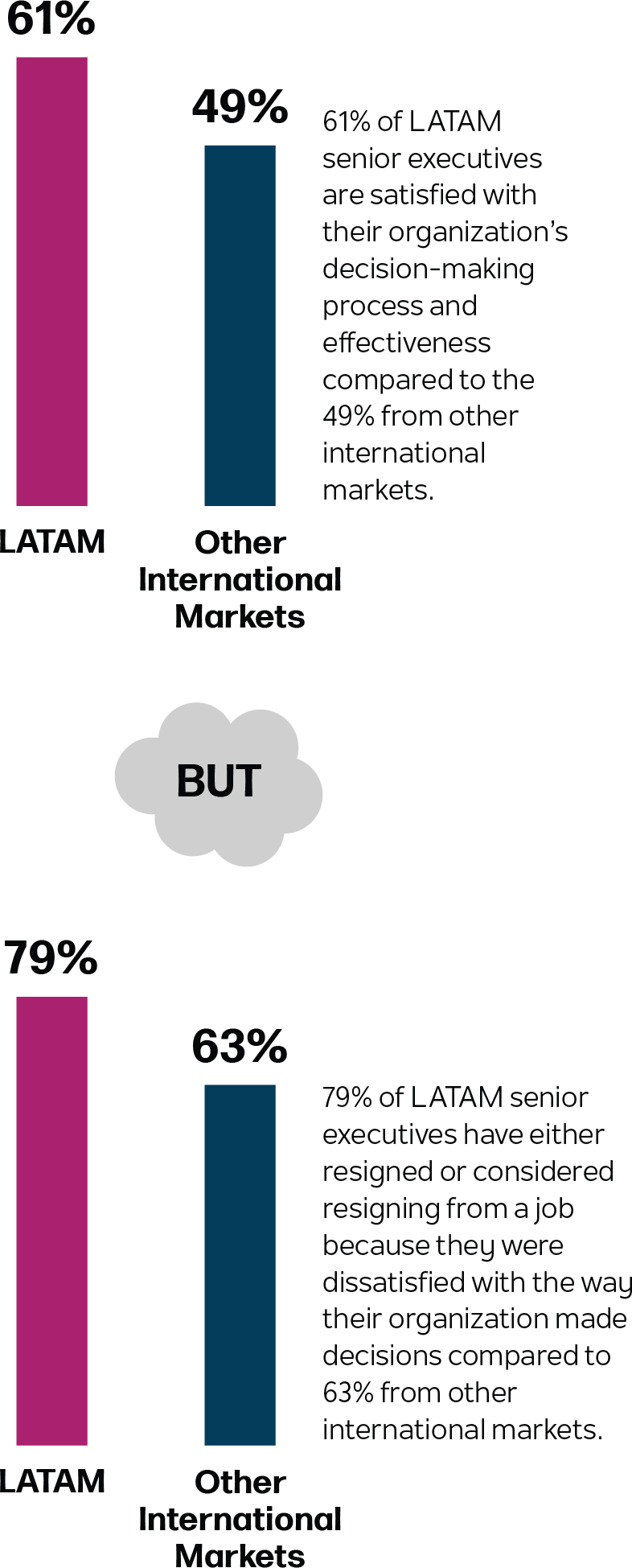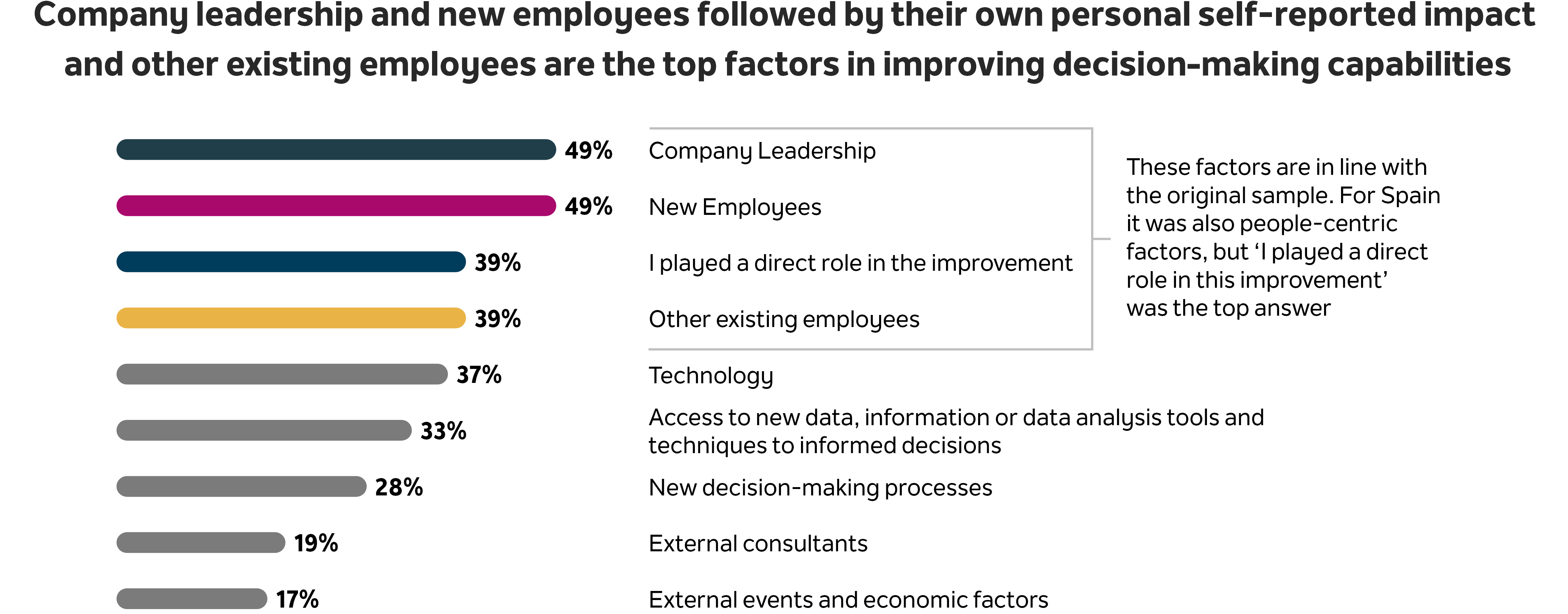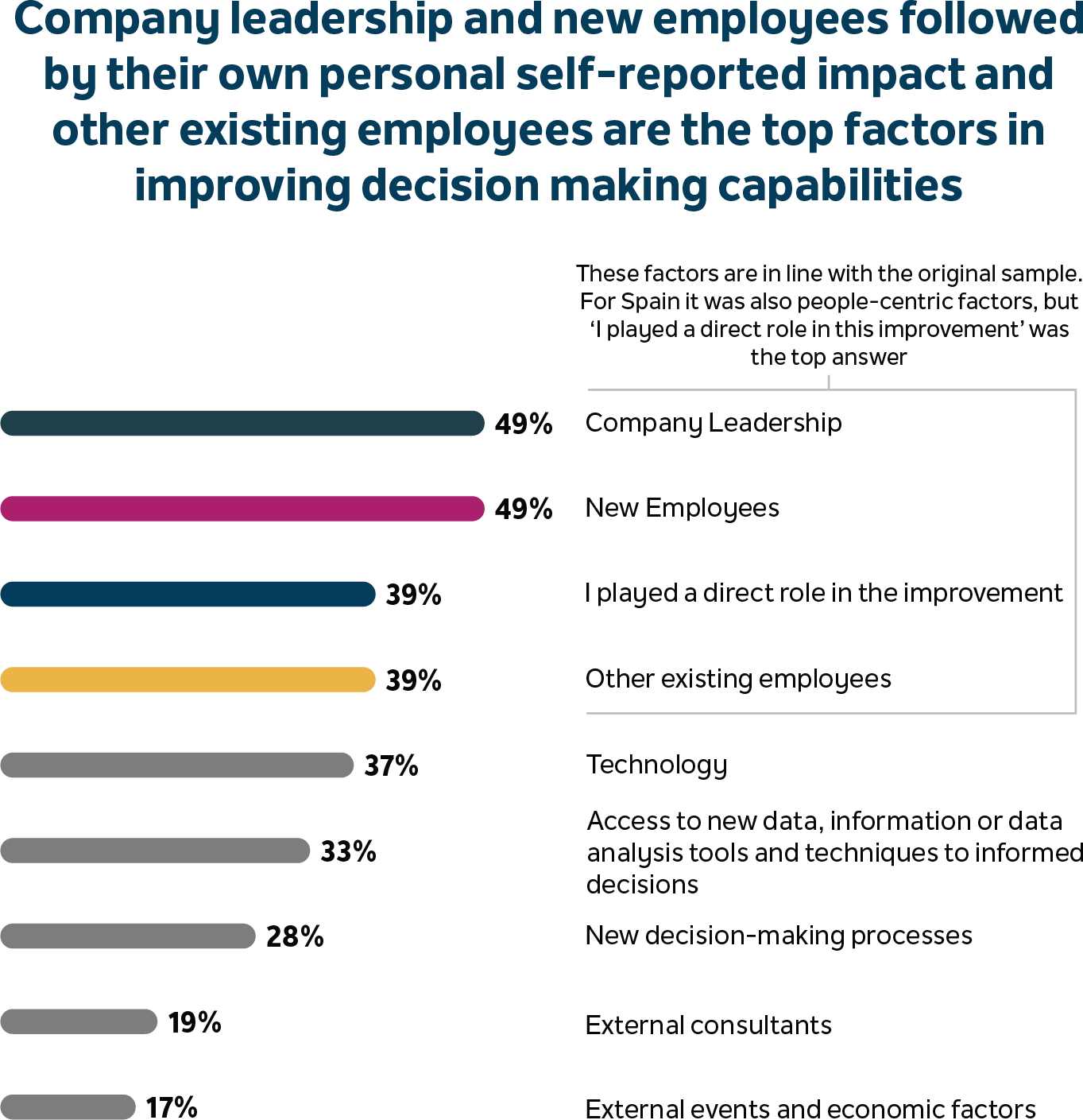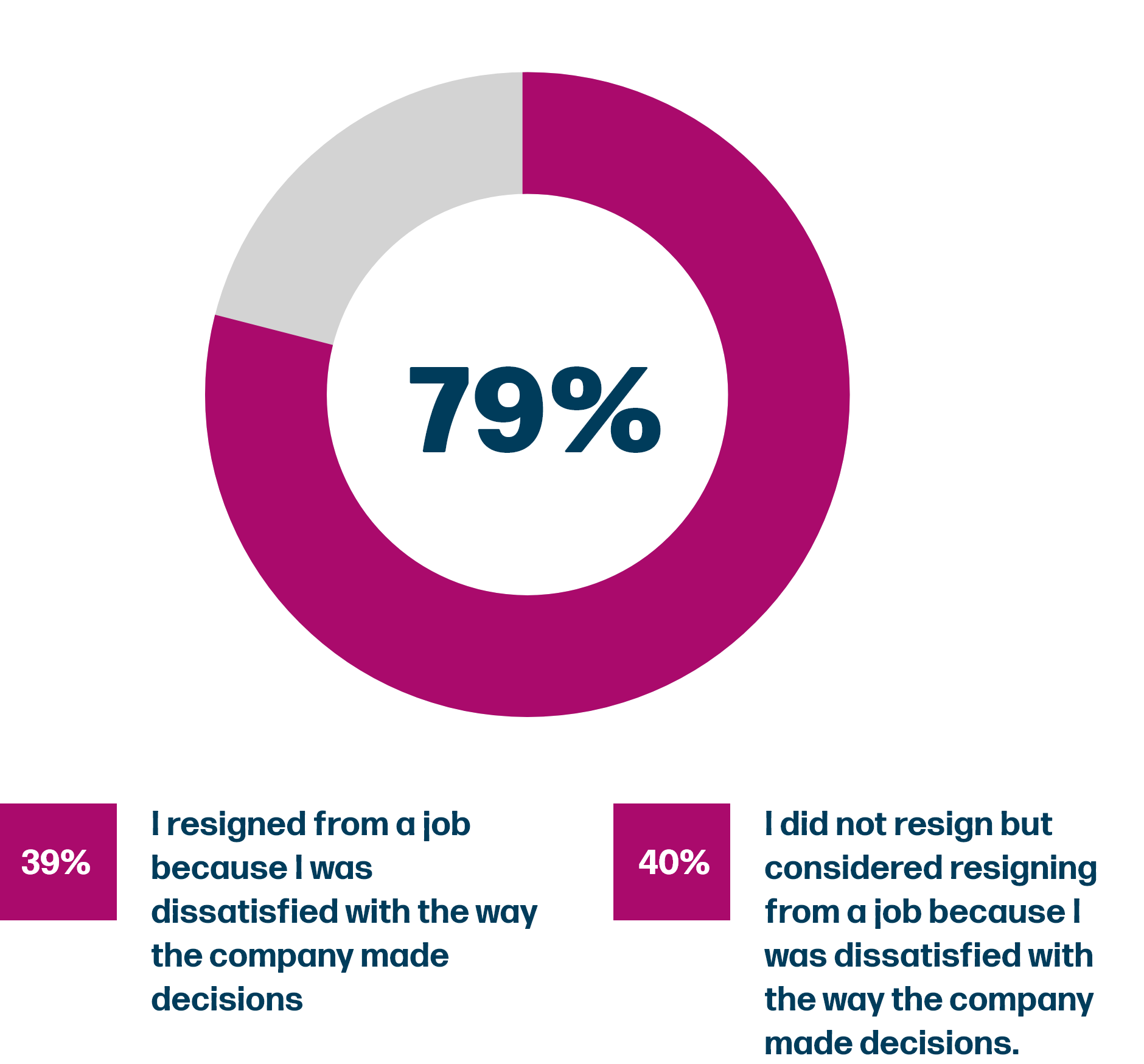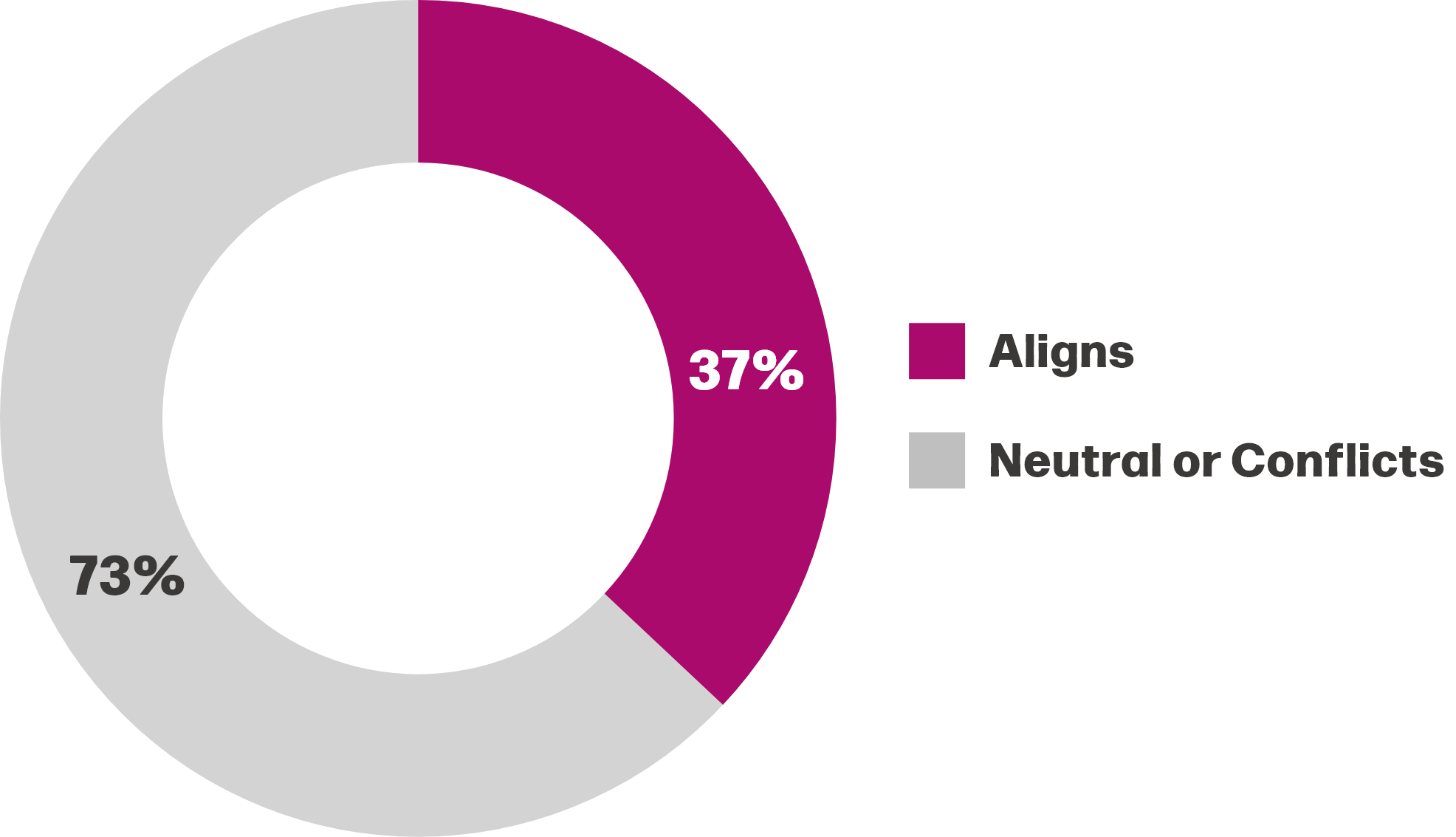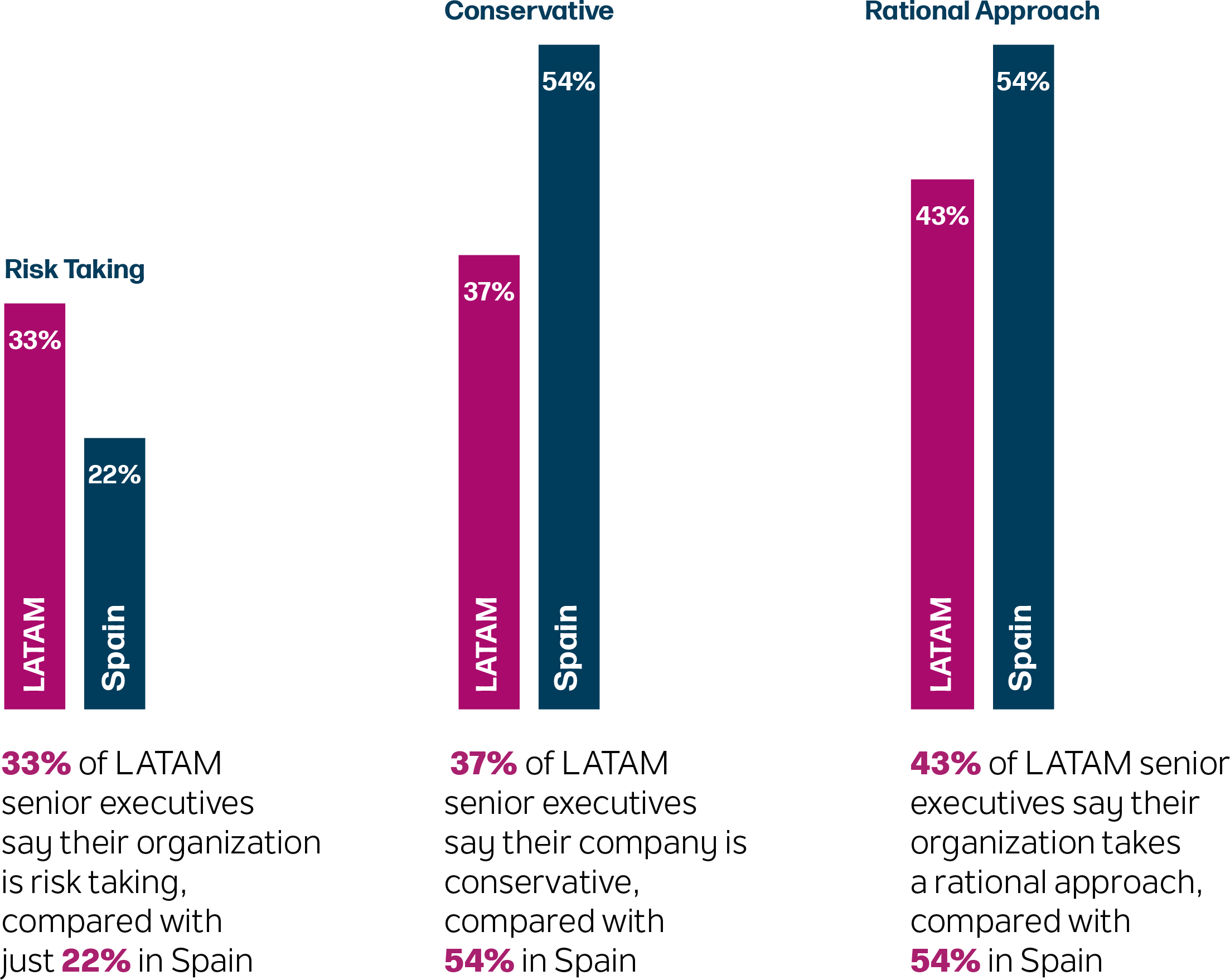As companies navigate a global business landscape that is more complex than ever, the skill of making effective, timely decisions should be considered non-negotiable for leadership.
Yet our new research shows that decision making is an overlooked factor in hiring strategies: a quarter of senior executives in our global survey say they were not asked about
their decision-making capabilities at the interview stage. And just 36% say their decision-making style aligns with their organization’s.
In both Latin America (LATAM) and other international markets, senior executives whose decision-making styles align with
their organizations are more likely to be happy in their role overall. People, rather than technology or processes, are also most likely to drive improvements in organizational decision making.
However, despite these similarities, our findings reveal some stark differences between LATAM and
the rest of the world. For senior executives in LATAM, satisfaction with their organization’s
decision-making processes is more than 10 percentage points higher than in other regions.
They are also a lot more likely to have been asked about their own decision-making capabilities at the interview stage (87% compared with 75%).
Despite this, the majority (79%) have either resigned or considered resigning at some point in their
careers because they were dissatisfied with the way their company made decisions, compared to
63% of senior executives from other international markets. And 39% of LATAM senior executives say
they have actually resigned, compared to 34% of those from elsewhere. Additionally,
only just over a third (37%) of LATAM senior executives’ decision-making style aligns with that of their organization’s.


